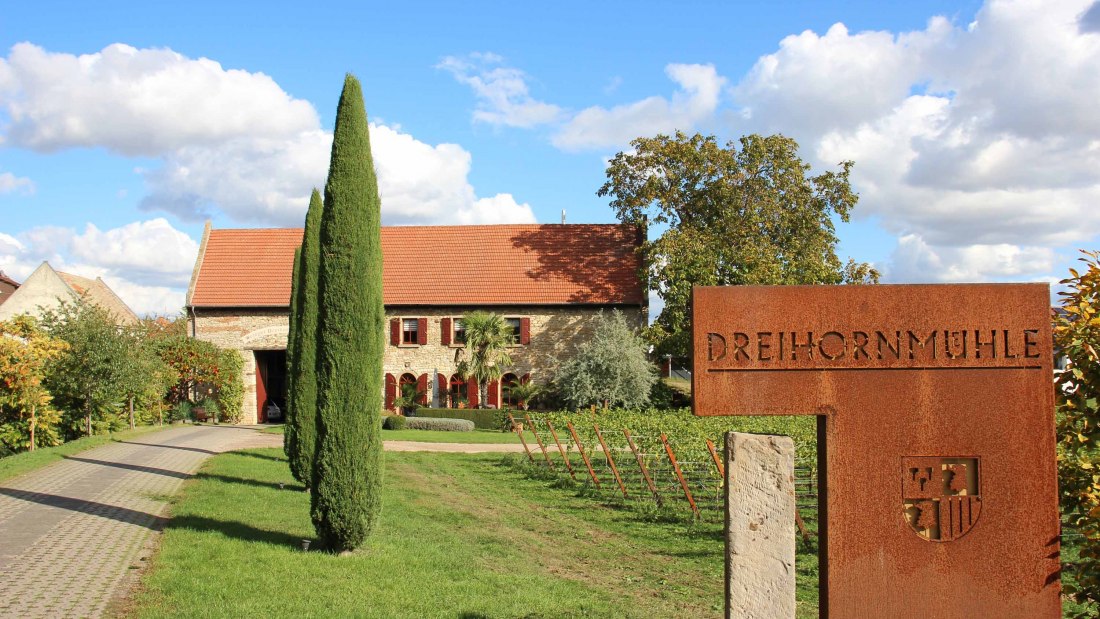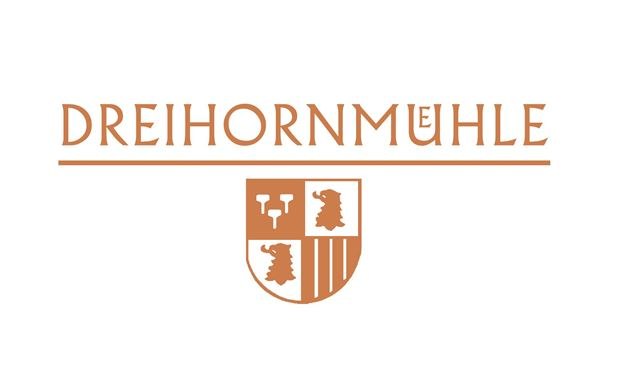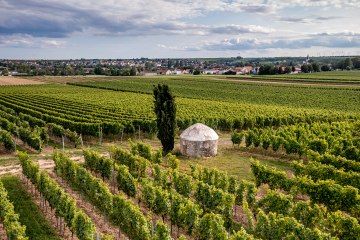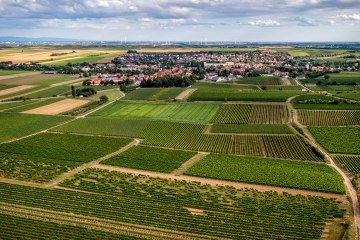





Weingut Dreihornmühle
Familie Orb
An der Brennerei 35
67593 Westhofen

Over 50 vineyard cottages - and a single well cottage
There is probably no village in Rheinhessen that could boast more vineyard houses: As many as 54 cottages adorn the vineyards of Westhofen. They were once shelters against the weather. In this particular one however, a spring was "protected" and a water reservoir was connected to it. The vineyard was first mentioned in a document in 1721 under the name "am brunnenhäusschen". The soils are characterised by clay marl with limestone and limestone rocks in the subsoil. “Terra Rossa", a red soil, is also found here. The winegrowers cultivate Riesling, Silvaner, Sauvignon Blanc or Pinot Noir. One of the highest vineyards in Westhofen.
> Interesting facts about the Westhofen Wingertshäuschen: https://www.wonnegau.de/wissenswertes-wingertsheisjer
From Wingertshäuschen to Wingertshäuschen: https://www.rheinhessen.de/wingertsheisje-wanderweg
> To the other single vineyards of Westhofen: Aulerde, Kirchspiel, Morstein and Steingrube

Once clay for potters, today premium wines for connoisseurs
Once again the Middle High German: "Ule" means pot. The site was first mentioned in a document in 1382 with the name "an Ule erden". Why pot? Because potters found clay there. Today, the clay marl should stay where it is. And that is below the vines! Just as well as loess and limestone. Top Rieslings grow here: ripe aromas and fine exoticism on the nose; creamy and opulent on the palate. Due to the southern exposure, the grapes ripen early. Hikers enjoy the multitude of vineyard houses.
> From Wingertshäuschen to Wingertshäuschen: https://www.rheinhessen.de/wingertsheisje-wanderweg
> In 1834, winegrowing pioneer J.P. Bronner described the Aulerde and the Kirchspiel as the best vineyards in Westhofen. https://www.vdp.de/de/die-weine/weinbergonline/lage/8079-kirchspiel#map-inline-target
> Rheinhessen blog: https://blog.rheinhessen.de/wanderbericht-westhofener-wingertsheisjerweg-rebenmeer-kommandozentrale-und-ein-liebesnest/
> To the other single vineyard sites of Westhofen: Brunnenhäuschen, Kirchspiel, Morstein and Steingrube

Once a quarry, today a vineyard
The single vineyard "Steingrube" begins directly at the village. It is characterised by limestone rocks with a thin layer of sandy loam. The site was first mentioned in a document in 1295 with the name "dicto stheingrube". The name of the vineyard refers to a quarry, which can still be easily traced today. Mineral Rieslings, but also Chardonnay or Sauvignon Blanc grow here.
> Regional history of Westhofen: https://www.regionalgeschichte.net/rheinhessen/westhofen.html
> The quarry is no longer recognizable. But in Gundersheim, a neighboring village of Westhofen, the former quarry "Rosengarten" offers beautiful walks. Please be sure to follow the rules, nature reserve! https://wonnegau.bund-rlp.de/themen-und-projekte/naturschutzgebiet-kalksteinbrueche-rosengarten/
> To the other individual sites of Westhofen: Aulerde, Brunnenhäuschen, Kirchspiel and Morstein

Glorious wines play on the tongue here!
No, for once this does not refer to the church (German: Kirche), which was often in possession of valuable land. The name has no religious reference, but means "hill covered with cherry trees". It was mentioned in a deed of donation in 1348 under the name "ab den Jierßbuhel". But it is not the cherry trees that catch the hiker's eye along the path today - but the cypresses. The slopes, which are up to 30 percent steep, are home to excellent wines that are internationally known. Limestone dominates the subsoil. But what does the word “Spiel” (English: play) refer to? Can cherry trees play? Do the leaves play in the wind maybe? Either way, wines from the Kirchspiel definitely play with the tongue in a good way.
> In the middle of the single vineyard: the Julius Tower. Info: https://www.wonnegau.de/sehenswuerdigkeiten-am-weg/a-juliusturm
> From Wingertshäuschen to Wingertshäuschen: https://www.rheinhessen.de/wingertsheisje-wanderweg
> Rheinhessen blog: https://blog.rheinhessen.de/wanderbericht-westhofener-wingertsheisjerweg-rebenmeer-kommandozentrale-und-ein-liebesnest/
> To the other single vineyard sites of Westhofen: Aulerde, Brunnenhäuschen, Morstein and Steingrube